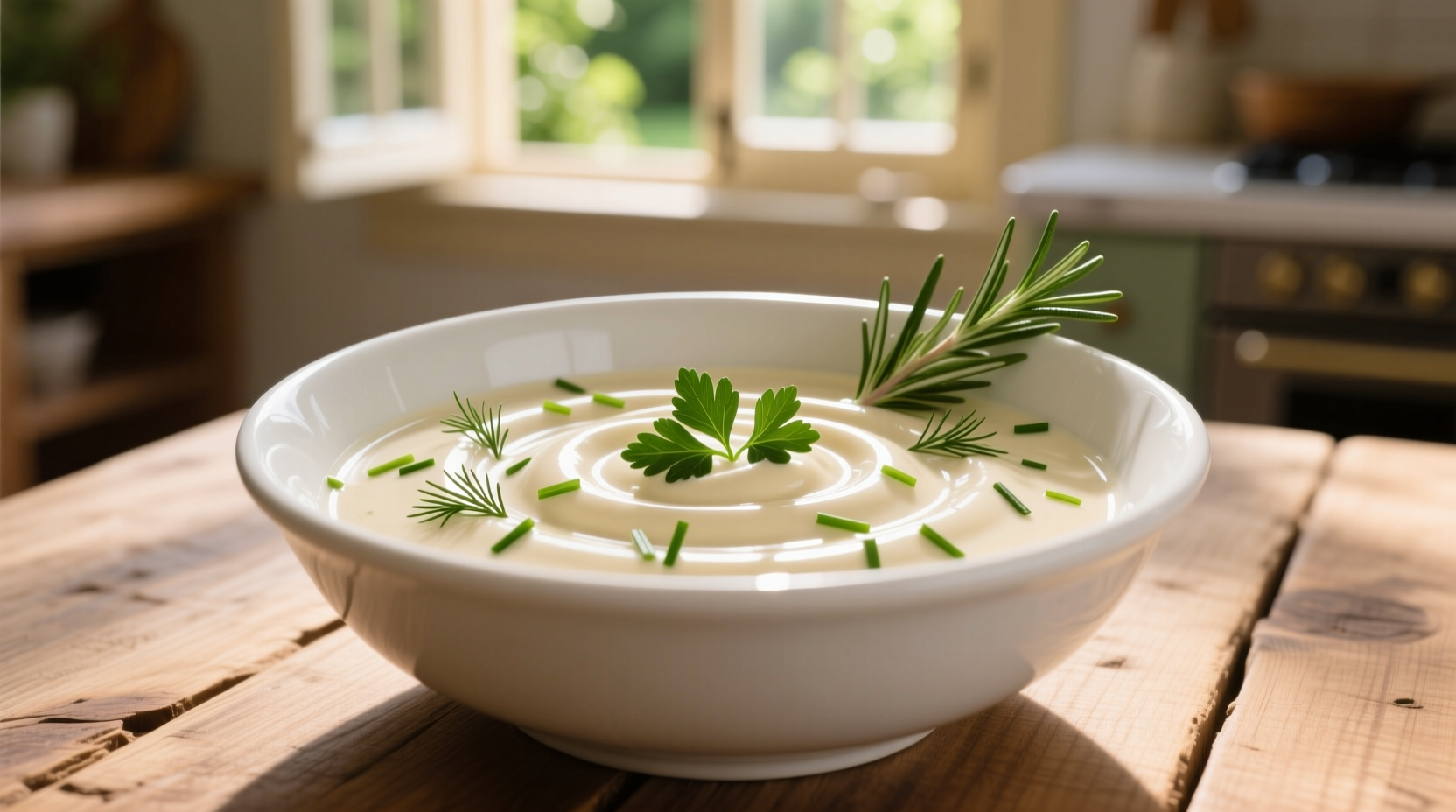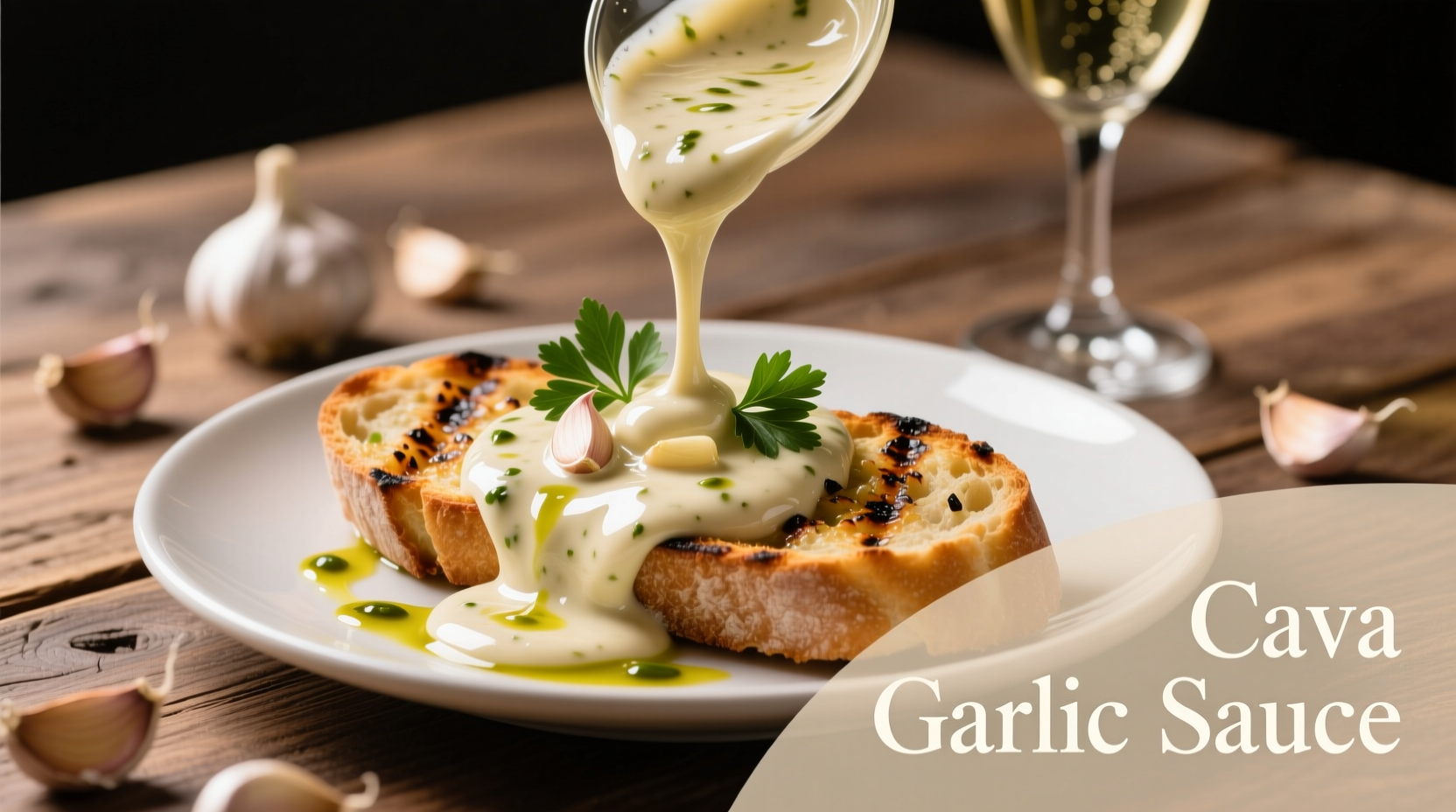Discover how this popular restaurant-style sauce transforms everyday meals with professional chef techniques you can easily replicate at home. Whether you're recreating Cava's famous dip or crafting your own signature version, this guide delivers practical insights for perfect results every time.
What Makes Cava Garlic Sauce Stand Out
Unlike conventional garlic sauces that rely solely on raw garlic's sharp bite, Cava's version achieves remarkable balance through precise ingredient ratios and preparation methods. The sauce features roasted garlic instead of raw, which creates a mellow, nutty foundation that won't overpower other flavors in your dish.
| Characteristic | Cava Garlic Sauce | Traditional Toum |
|---|---|---|
| Garlic Preparation | Roasted | Raw |
| Texture | Creamy with slight graininess | Ultra-smooth emulsion |
| Acidity Level | Moderate (lemon juice) | Higher (vinegar + lemon) |
| Flavor Profile | Complex, rounded garlic notes | Intensely pungent |
This fact comparison reveals why Cava's approach appeals to broader palates while maintaining authentic Mediterranean character. The roasting process transforms garlic's chemical composition, reducing allicin content responsible for raw garlic's harshness while developing sweeter, more complex flavor compounds.
Essential Ingredients Breakdown
Understanding each component's role ensures perfect results when making or using this sauce:
- Roasted garlic - Provides mellow, nutty foundation (6-8 cloves per batch)
- Extra virgin olive oil - Contributes fruitiness and helps emulsify (1/2 cup)
- Fresh lemon juice - Balances richness with bright acidity (3 tbsp)
- Plain yogurt or tahini - Creates creamy texture without dairy heaviness (1/4 cup)
- Mediterranean spices - Typically includes cumin, oregano, and a pinch of cayenne
- Sea salt - Enhances all flavors (1 tsp)
Food scientists at the University of California Davis confirm that roasting garlic above 140°F (60°C) triggers Maillard reactions that develop 150+ new flavor compounds, explaining the dramatic taste transformation from raw to roasted.
Perfect Pairings: Where This Sauce Shines
Cava garlic sauce excels in applications where you want garlic flavor without overwhelming other ingredients. Its moderate acidity and creamy texture make it versatile across multiple meal components:
Mediterranean Garlic Sauce Evolution
- 1950s: Traditional toum emerges in Levantine cuisine as raw garlic emulsion
- 1980s: Greek restaurants introduce yogurt-based garlic sauces in America
- 2011: Cava restaurant chain launches with roasted garlic variation
- 2015-2020: Roasted garlic sauce gains popularity through fast-casual Mediterranean chains
- Present: Home cooks adapt restaurant-style versions with accessible ingredients
Best Applications
- Grain bowls - Drizzle over falafel, roasted sweet potatoes, and greens
- Protein enhancer - Marinate chicken or fish before cooking
- Dipping sauce - Serve with pita, roasted vegetables, or grilled halloumi
- Spread alternative - Replace mayo in sandwiches and wraps
When to Choose Alternatives
Understanding context boundaries prevents culinary missteps. Avoid using Cava-style garlic sauce when:
- You need intense garlic punch (opt for traditional toum instead)
- Creating dishes requiring neutral-flavored base (use plain yogurt)
- Pairing with delicate seafood where strong flavors would dominate
- Following authentic Middle Eastern recipes calling specifically for toum
Creating Your Own Signature Version
Recreate restaurant-quality results with this chef-approved method that solves common home cooking challenges:
- Roast garlic properly: Cut tops off whole bulb, drizzle with olive oil, wrap in foil, bake at 400°F (200°C) for 40 minutes until golden and soft
- Cool completely: Temperature affects emulsification - warm garlic causes separation
- Process in food processor: Start with garlic, lemon juice, salt, and spices
- Slow oil incorporation: Add olive oil in thin, steady stream while machine runs
- Finish with yogurt/tahini: Blend until smooth and creamy (2-3 minutes)
Professional chefs at the Culinary Institute of America recommend using a 3:1 oil-to-garlic ratio for optimal emulsion stability without excessive richness. The key to preventing common separation issues is maintaining consistent temperature and adding oil gradually.

Storage and Shelf Life Guidelines
Preserve freshness and safety with proper handling:
- Refrigerate in airtight container for up to 7 days
- Freezing alters texture - not recommended
- Always use clean utensils to prevent contamination
- Discard if separation becomes permanent or odor changes
Food safety experts at the USDA note that garlic-in-oil mixtures require careful handling due to potential botulism risk. Always refrigerate and consume within one week, and never leave at room temperature for more than two hours.
Nutritional Profile Considerations
This sauce offers more than just flavor - it delivers functional benefits when used appropriately:
- Garlic contains allicin compounds with documented antimicrobial properties
- Olive oil provides heart-healthy monounsaturated fats
- Lemon juice contributes vitamin C and aids iron absorption
- Yogurt adds probiotics when used as base ingredient
Registered dietitians at the Academy of Nutrition and Dietetics confirm that moderate garlic consumption (1-2 cloves daily) supports cardiovascular health without the digestive discomfort associated with larger quantities of raw garlic.











 浙公网安备
33010002000092号
浙公网安备
33010002000092号 浙B2-20120091-4
浙B2-20120091-4